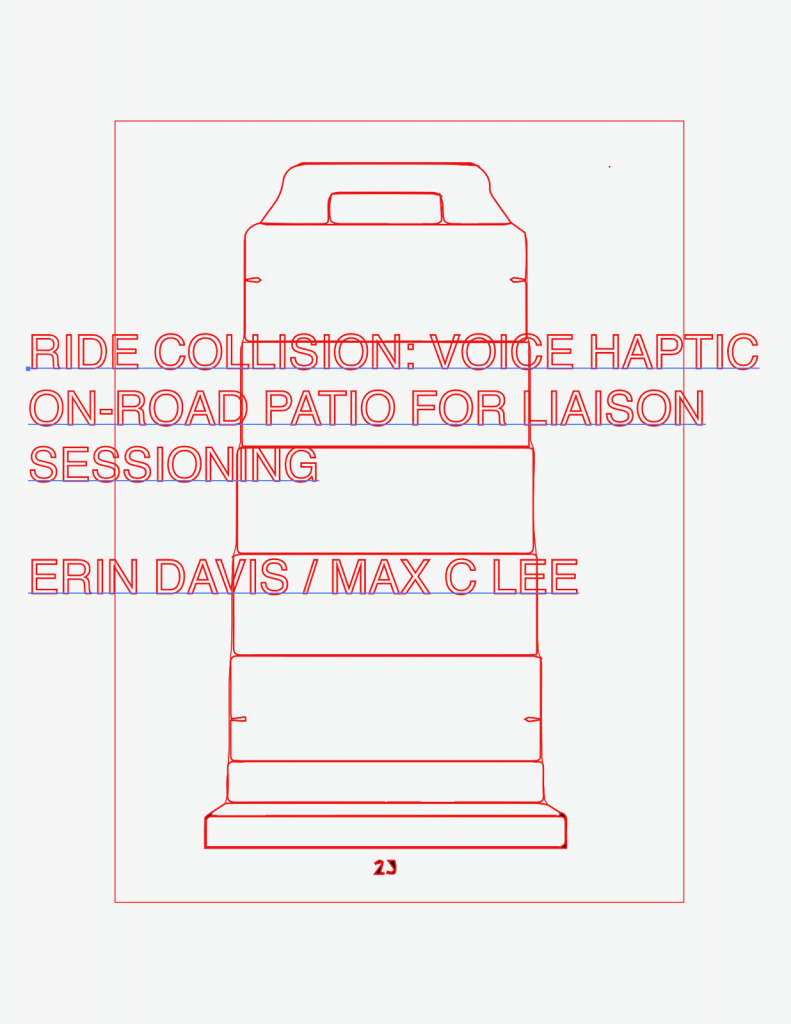ERIN DAVIS & MAX C LEE | Ride Collision: Voice Haptic On-Road Patio for Liaison Sessioning

ERIN DAVIS/MAX C LEE
Ride Collison: Voice-Haptic On-Road Patio for Liaison Sessioning
August 4-26, 2017
RECEPTION
Friday, August 4, 6-10pm
For the month of August, INVISIBLE-EXPORTS is surrendering the gallery to artists Erin Davis and Max C Lee.
Ride Collision: Voice-Haptic On-Road Patio for Liaison Sessioning is part of Erin Davis / Max C Lee’s Ride Collision series of environments built from discarded, disposable, and cheap materials. Each assemblage combines disparate items that, when viewed together, form a dialogue about cars, law, comfort products, and the transformation of bodies within these networks. With the installation presented here, Davis / Lee focus on the collision of personal and governed space.
These confrontations begin taking shape with styrofoam “rock” piles, painted black and coated with the same retro-reflective material used in road paint. Reminiscent of salt-worn asphalt, piled after a scene of impact, with surrounding bright spotlights of a forensic examination post-emergency. Elsewhere, diagrams of “impact attenuators” are rendered in thin lines on loose pieces of drywall. Also known as “crash cushions,” impact attenuators are metallic or plastic barriers designed both to control traffic and brace for impact.
Collision determines the design of transportation space: in physical design (barriers, lights, symbols, and retro-reflective surfaces) and in abstract conceits (traffic law). The design of transportation systems also assumes motor-vehicle operators have bodies (for now). A hypothetical ideal functionality exists behind the safety systems devoted to these bodies: protect the body of the driver, deform everything around it should there be a crash. However, this ideal functionality is flawed. The crash deforms the bodies of drivers and are then rushed from transportation space to an environment similarly designed around the safety and survival of bodies: medical space. Here, breathing, fluid-filled bags act as organs sustained by a safety-system of objects that evoke both the medical and vehicular.
The design of transportation systems also assumes that drivers have internalized a set of codes (traffic laws) dictating their behaviors. This system, too, is constantly prepared for collision – between law and body, where the law is embodied by law enforcement. Much like the body’s role in designing roads and cars, its destruction is contingent to enforcing the law.
* * *
Erin Davis and Max C Lee both received their MFAs from the School of Visual Arts in 2016. They have been creating collaborative works for two years, this exhibition being their first solo show in New York. Davis / Lee are also the co-founders and curators of Re: Art Show, an ever-evolving group exhibition within the now-defunct spaces of the former Pfizer pharmaceuticals factory in Brooklyn. Both artists live and work in New York.